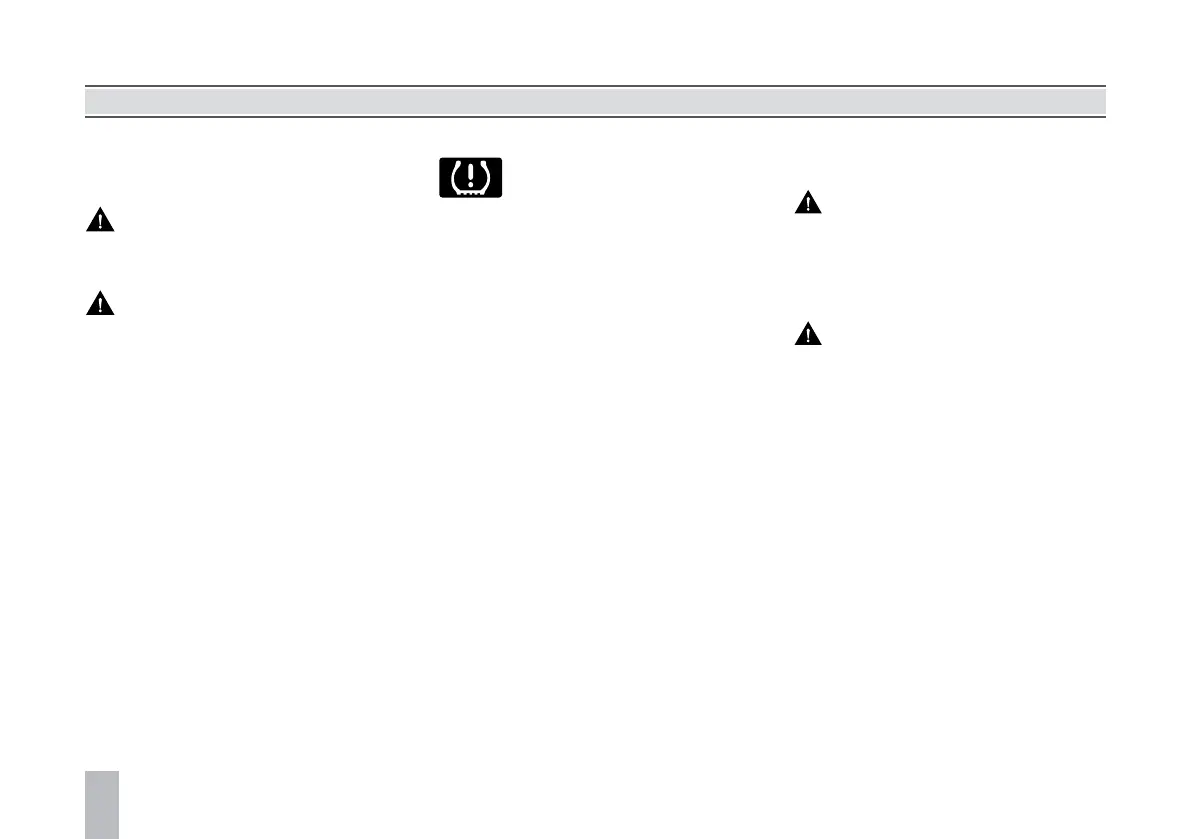128
Tyre Pressure Monitoring System
(TPMS)
TPMS can not replace routine
maintenance and checks of tyre
conditionandpressures.
Using equipment that transmits
on frequencies similar to that of
the TPMS may interfere with the
operation of the Tyre Pressure
Monitoring System, this may
illuminate a warning or register a
temporaryfault.
Note: TPMS only warns of low tyre
pressures,itdoesnotre-inatethetyre.
TPMS uses pressure sensors built into tyre
valves to continuously monitor pressure and
transmit data to the ECU inside the vehicle
using RF signals. If it deduces that the pressure
of that tyre has fallen below the predefined
limit of the system, the warning light in the
instrument pack will illuminate (always
yellow). For more information, please refer to
‘Instrument Pack’ in ‘Instruments and Controls’
section. TPMS can remind you of low tyre
pressure, but it can not replace normal tyre
maintenance. For tyre maintenance, please
refer to ‘Tyres’ in ‘Maintenance’ chapter.
If the TPMS malfunction indicator
lamp illuminates, and the warning message
“XX Tyre Pressure Low” is displayed, it
is advised that you please stop the car as
soon as possible, check the tyre pressure
and inflate the tyre to correct pressure
value. Driving with under-inflated tyres may
overheat and cause tyre fault. Over or under-
inflated tyres wear out more rapidly and also
have a detrimental effect on the car’s handling
characteristics. Under-inflated tyres increase
the rolling resistance of the car which, in turn,
increases power consumption. Always check/
adjust tyre pressures when they are cold.
Note:Afterchangingthetyrepositionor
replacing a TPMS sensor and receiver,
the vehicle needs to run at a speed of
40km/hforabout10minutestocorrectly
indicate the tyre pressure value at the
correspondingposition.
Load Carrying
DO NOT exceed the gross vehicle
weight or the permitted front and
rear axle loads. Failure may result
invehicledamageorseriousinjury.
Loadspace Loading
Ensure that the rear seat backrests
are securely latched in the upright
position when loads are carried in
theloadspacebehindtheseats.
When luggage is carried in the load space,
always ensure heavy items are placed as low
and as far forward as possible, so as to avoid
the cargo shift in the event of an accident or
sudden stop.
Drive carefully and avoid emergency braking
or manoeuvres.
Driving with the tailgate open is very
dangerous. If the load being carried
requires the tailgate to be open, please
ensure the cargo is suitably secured.
Starting & Driving

